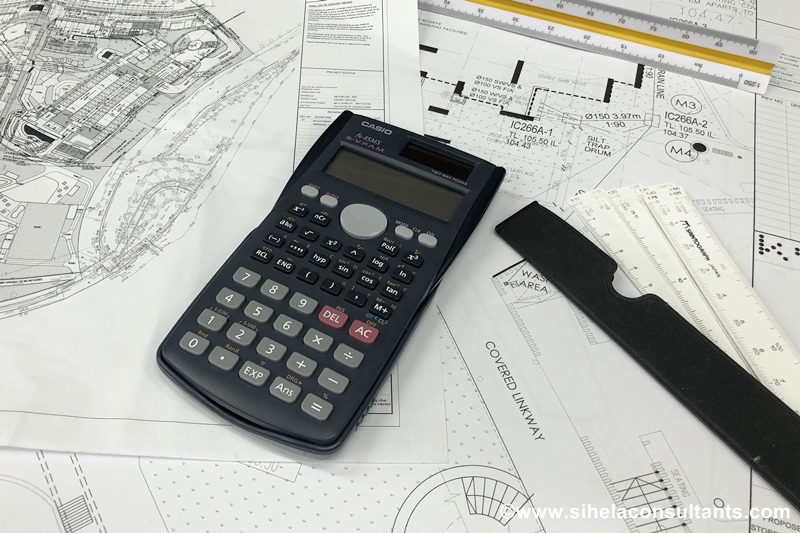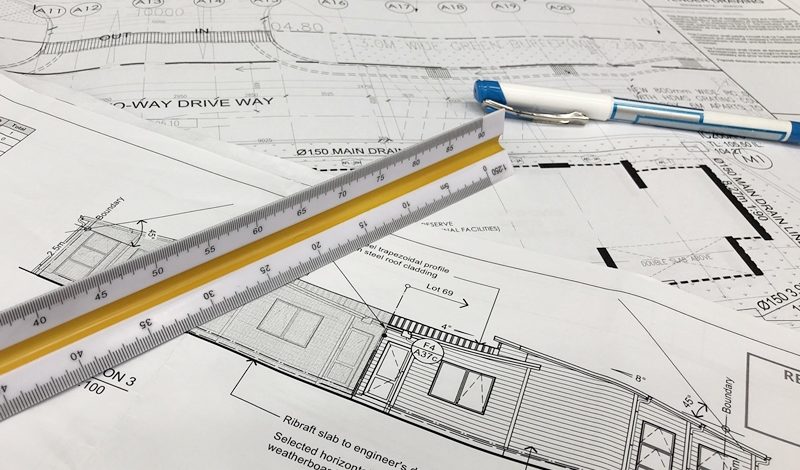It is a known fact that construction projects are always a result of teamwork effort. There are many professionals and skilled people work on a construction project to achieve the final goal of delivering the project. While construction management is important in delivering the project according to the designs and plans, contract administration plays a major role in delivering the project within the estimated cost and as per specifications, laws and guidelines. Among the disputes arise in contract management process, variations in construction contracts play a major role with an impact on project cost. It can increase or decrease the project cost.
In this article, I want to share most of the theories behind variations in construction projects. However there will be few more articles on issues arising when handling variation claims including mistakes to avoid when you submit your variation claim as a contractor or sub-contractor.
Till that, let’s discuss what are variations and its impact on construction projects.
The Process of identifying and valuation of variations
In the process of handling variations, you will find few steps as mentioned below.
- identifying variations to the contract
- issuing variation order instructions
- carrying out variation work as in variation order
- preparation and submission of variation claim
- Valuation of variations
Although Variations and variation orders are common in construction projects followed by VO claims most of the time contractors struggle to get fair valuation for their variation claims as their expenses for the extra works are more than what they are get paid.(in additional work).
Therefore variations play a big impact on cost management of any construction project. At the same time, consultants like to deliver their projects within the stipulated budget. Therefore they look every ways that they can save money avoiding cost overruns.
I have experience in handling variation claims and valuation of variations for major projects. I have experience on the struggle from contractor’s side as they cannot get the approval easily. Sometimes there are incidents that main contractor pass their losses in performing variations to their sub-contractors.
Sometimes, these variation instructions end up as disputes to the contract.
This is why in this post I want to share some of the important details regarding variations in construction projects with the hope of continuing this topic to more detail in future posts.
But, before learning the disputes which may arises and mistakes which you may conduct, it is important to understand the concept and the law behind the variations to the construction project.
What are Variations in Construction Contracts?
In construction projects the term ‘Variation’ means any change to the original contract. These variations can be in a way of addition or omission to the original scope of work.
Causes of variations
There are many causes for variations in construction projects. Below are some of the reasons for variations. However for specific projects, you should refer the contract document to find specific terms and clauses that are relevant to your project.
Variations can be due to,
- Addition or omission from the scope of works
- Changes to the quantity of work in the form of increase or decrease
- Change of dimension, level or position of the works that affect the construction cost.
- Changes to the construction quality including material quality changes.
- Removal of part of the scope or demolition of part of the work scope by the Employer which affects the total scope of work.
- Due to changes in the schedule of completion. That is, if there is a necessity arises to complete the work or part of the work earlier than the agreed Time for Completion, then it affects the work completion. As a result, variations to the contract may occur.
Simply, variation to the contract means any changes to the original scope of work which can be in the form of addition or omission and such changes can create impact on project cost and completion time.
What is a Variation Order?
Variation order is a common and popular term in construction projects. I have experience that most of the time the terms variation order or VO are more popular to introduce any variations to the contract. However variations to the contract are the changes to the contract as we discussed at the beginning of this post.
Then what is a Variation order in construction contracts?
A variation to be valid, it must be in writing. Only the authority person to the contract can issue such instructions. Such instructions issued by the authority person are known as a variation order to the project.
Who can issue a Variation Order?
The authority person can be architect, superintending officer or contract administrator who has the power to issue instructions. In your contract agreement you can find a clause that mentions the authority person.
If the contractor receives verbal instructions to carry out some extra work in the way of addition or omission, he should write it to the Architect or superintending officer to get approval in order to make it a valid variation order.
At the same time, if contractor finds any extra work to do which is not stated in the contract document or scope, he should write to the Architect or authority person within the stipulated time frame in the contract.
This is where contractors should have proper understanding on the variation clause in his contract agreement.
How to perform Valuation of Variations

When there is a variation and it is instructed as a written instruction, the contractor is required to submit his proposal for the consultants or client for evaluation. This contractor’s variation claim should include all cost implications in detail including supporting documents such as quotations and relevant details from the drawings and site records.
Once the variation claim is submitted, then valuation is done by the consultant Quantity Surveyor or the responsible cost consultant.
Valuation of variations plays an important role in variation claim procedure. At this stage, it also can be a dispute for the contract.
However, if the contractor understands the procedure of variation claim preparation and submission and if he also understands the provisions for variation claims in his contract agreement, variation claim procedure is not much difficult.
Below are the most common practices in valuation of variations. However, it is necessary to refer your contract agreement and related variation clauses for exact details. Contractual provisions are different in different countries. It also can be different according to your contract agreement. Therefore below is a guideline only to understand how valuation is done.
Usually Valuation of Variations is carried out as below.
- If the variation work is an omission, then the rate or amount mentioned in the contract is used to evaluate the omitted amount.
- If the variation work is an addition, below are the methods for valuation of variation.
- If the variation of work is due to the changes in quantity of similar work which is under the contract scope, then the same rate in contract is used for valuing of the variation.
- If there is a similar work to the variation work is in the contract scope, however the variation work is carried out in different conditions then the rates in the contract for similar character work is considered as a basis of valuation.
- However there should have fair allowances added to the different conditions which the variation work occurred.
- If any of the above situations are not met, then it is necessary to check market rates. It is necessary to obtain at least 3 quotations to establish the fair market rate for the variation work. In this situation, contractor needs to submit quotations from few different suppliers and contractors to the consultants to evaluate. He needs to submit his quotations together with his variation claim.
- If the parties to the contract cannot come in to a decision of fair valuation using any of the above methods, then it is necessary to evaluate actual material, machinery and labour costs needed to carry out the work.
- For such evaluation, it is necessary to use all the necessary site records including labour hours and machinery hours used for the work. After the valuation is done using resources used at site, it is necessary to add a reasonable overhead and profit percentage in order to compensate the contractor for his time on supervision.
Submission of Variation Claim
When there is a variation to the works and once it is instructed in writing, the contractor needs to carry out the work as per instructions.
After the work is completed, he needs to submit his variation claim at the time when he submits the progress claim. Together with his claim, it is necessary to submit the necessary documents and details to support his claim.
There may have situations which contractor receives instructions to carry out the work under daywork. In such times, contractor should inform the Contract administrator, superintendent officer or the respective clients representative of the time the work being carried out.
It is necessary for the contractor to keep signed day work records in order to submit with his claim.
In general, this is how to conduct valuation of variations. Also it is contractor’s responsibility to submit his variation claim with all necessary details in order to get the payment certified within a reasonable time period.
These conditions and method of evaluation of claim can be different depending on your contract.
Conclusion
During the contract administration process, you cannot avoid situations of variations. This is why this term is more popular among the construction professionals.
Variations in construction contracts play a major role in construction cost management. It affects the final cost. These cost impacts can be in a way of addition or omission, but it changes the final contract sum.
Therefore variations play an important role in construction administration process which include identifying variations, issuing instructions to proceed, submission of variation claims and valuation.
How can I help you?
If you need to check your contract document, identify variations or need consultancy related to the variation clause, then contact me to book a consultancy session.
Further reading: Variation claim submission guide for contractors


Came across this blog post interested, added to bibsonomy
Thanks
How about rate negotiation ? What are the things that should be considered while negotiating with the contractor to keep his rates below the rates quoted by him during original agreement?
Rate negotiation is an art as per my experience. First, it is important to keep your valuation according to the contractual clauses. Then you can get the current market prices by inviting few other contractors to quote. There are contractors who quote for such work although they know that the work will be given to the existing main contractor.(In VO cases) You can use such quotations as reference for negotiating with your current contractor.
There are also times that both parties agree to huge discounts considering the win-win scenario. That depends on the time involved, value of the work and possible disputes and cost for such dispute resolution.
very helpful information, thank you!!
Glad this article is helpful.Thanks for the comment.
Hi, I desire to subscribe for this post to obtain most up-to-date updates, so where can i do it please help.
Excellent explanation. Anyone can easily comprehend since it’s simple & focused. Keep up the great work!
Hi Amelia is there online certificate course for Quantity SurveyorsWilli
Hi Willi,At present the Certificate in Quantity Surveying course is offered online.I will send details via email.
One Item as per Bill of quantities is 10 m , but actual quantity as per Tender drawing is 65 m, This items are now totally descope from the contract. How to submit this cost saving variation to client.which quantity we need to consider, 10m or 65m please explain.
Hi Azhar,This is how I understand your issue.However it is necessary to read the contract properly.
If the item is omitted from the contract,first consider the omission.After that,now there is no such item for this contract.(Therefore no issue with whether it is 10m or 65m)
Hope you have written instructions in order for this omission.
After the omission,it seems this item has been carried out as a VO.
Therefore it is a new item for the contract. Consider the actual quantity for the variation submission.(The quantity actually carried out at site)
Thank you for the reply. My Question is which quantity we need to consider for the omission. because as per the Contract BOQ it is only 10m . But as per the Tender / contract drawing it was 65m. at the time of tender didnt check the accurancy of the BOQ quantity so that this much difference was occured.
How about the power of the architect/S in Variation order if the clause is not stated in the contract?
How about the power of the architect/S in Variation order if the clause is not stated in the contract? Any case law can be referred for this issue?
I have contracted to have a residential house built on a lot 75′ wide by 100′ deep; contract signed, big down payment given, contract and all house dimensions approved and ratified. Is it a “variation” when they are making me approve reducing the standard size 14′ x 12′ rear screened porch down to 14′ x 10′ in order to fit setback requirements? The porch is essential for a large family’s gatherings.
Hello Mam, Thank you very much for your wonderful explanation its very easy and simple for everyone the understand. Mam, i am looking for the topic (Claims and Dispute Management in Projects).
Can you help me.
Good Evening madam
If the Omission is substantial , are we entitled for Loss of Profits and Overheads ? .
Txs N Rgds
This depends on the situation.If the work has already started,then, can claim for the overhead under work progress. That also depend on the contract clauses. In general,if the contract doesn’t provide a clause,then parties have to seek help under common law.That also depend on how you prove the facts.
good
Is there a stadard FORMAT for issuance of Variation Order for Construction Contacrt,Please advice.
Should have a standard format for VO instructions. Please check your contract document.